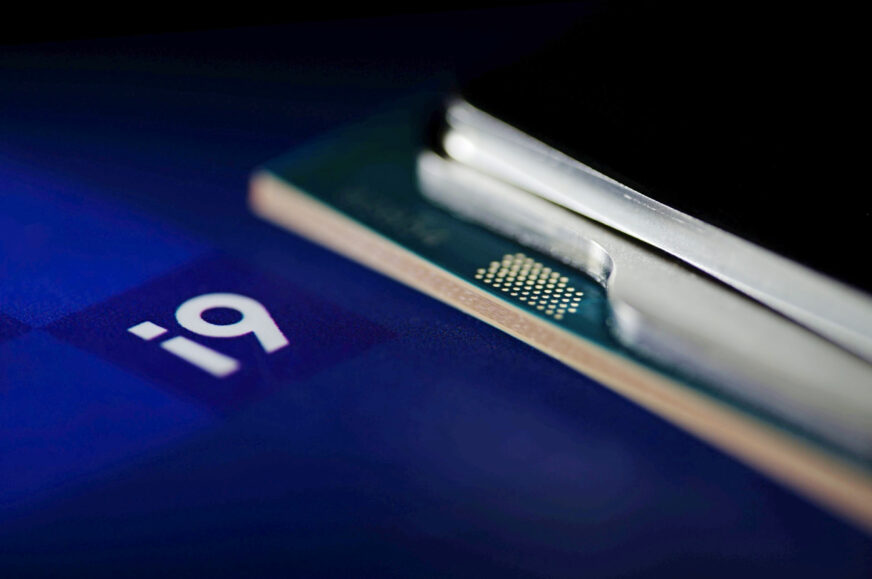Conclusion
The top model of the 14th generation of Intel Core (Raptor Lake Refresh-S) processors has outperformed everything that has come out for desktop computers so far. In speed, but also in power draw. On the one hand, the 6 GHz metric for single-threaded applications has been reached and the clock speeds are very high even under all-core boost, the side effect is that the Core i9-14900K’s power draw can sometimes spike up to 400 W.
Conclusion
The assignment for making the Core i9-14900K was apparently clear – to outperform more clearly (than the Core i9-13900K) the Ryzen 9 7950X, whatever the cost. This has been achieved, and until the launch of AMD’s Zen 5 processors, the most powerful model in the Raptor Lake Refresh family is the fastest you can get on mainstream platforms (Intel LGA 1700/AMD AM5). At least in terms of “raw” performance.
The only type of tasks in which the Core i9-14900K didn’t break through to the top spot on average, as is usual for this series, are games. Even the Ryzen 7 7800X3D is better at this. Overall (and also in terms of efficiency). Although the Ci9-14900K is a top-notch processor for gaming, it should be noted that with slightly lower gaming performance it has significantly higher power draw and is thus characterised by lower efficiency. Sure, after manual tuning it will be possible to narrow these differences significantly, but when it comes to operating without power limits while achieving the specified parameters (i.e. at 5.7 GHz on P cores for Core i9-14900K’s all-core boost), Intel’s processor is lagging behind in this regard.
But the power of the most powerful Core i9 lies in its “better” versatility. This is even compared to the Ryzen 9 7950X3D, which, due to its lower clock speeds (both all-core and SC boost), does not achieve higher application performance than the Ryzen 9 7950X, with which we’ll compare the Core i9-14900K in a following test. The raw multithreaded performance of the two competing processors (Core i9-14900K and Ryzen 9 7950X) is fairly evenly matched, though for 3D rendering, Intel’s solution will usually have a slight edge. Of course, the differences are so small that in some cases, on some motherboards, it can be the other way around. For video encoding, the Ryzen 9 7950X seems a little better prepared. The latter is always lower-power and therefore more power efficient at maximum output.
By the way, notice that in some places where CPUs experience jumps in load, the Core i9-14900K responds more aggressively than other models. There is a significant spike in peak power draw (213.8 W) from average (142.5 W) at the tipping point in, for example, Shadow of the Tomb Raider, but also in the F1 2020 game and also between scenes in Cinebench R23.
In video editing, sometimes the Core i9 processor is faster, sometimes the Ryzen 9, it depends on the task – it’s individual. Both in Adobe Premiere Pro and in DaVinci Resolve (Studio). A similar scenario applies to Adobe After Effects and Intel’s (Core i9-14900K) “dominance” can only be stated for Adobe Photoshop, Adobe Lightroom, Affinity Photo and XnView, which are photo editors. Ryzen 9 (7950X) excels in this environment in Zoner Photo Studio X (RAW to JPEG conversion) and in Topaz Labs AI applications, where AMD Zen 4 processors benefit from the implementation of AVX-512 instructions.
The Core i9-14900K processor is unrivalled in single-threaded applications, where it leaves the Ryzen 9 7950X behind virtually every time. Intel is typically 10–20% faster here (both on the web and in an office environment or when encoding audio recordings, which are also single-threaded tasks). Such results are again achieved at higher Intel processor power draw, but no longer fundamentally and efficiency in this case leans more towards the Core i9. And it should also be noted that 6 GHz is easier to achieve in practice than the “theoretical” 5.85 GHz of the Ryzen 9 7950X. Easier in that Intel’s maximum SC boost is easier to cool than AMD’s. Although for stable operation (6 GHz) of the Core i9-14900K you will also need an above-standard performance cooler. Power draw in a single-threaded load is only around 60 W, but because of the very small area (equivalent to two cores) on which it’s generated, temperature even with a cooler like the Noctua NH-U14S exceeds 80 °C.
Across all scenarios, the Core i9-14900K is an extremely powerful processor that never has any weak spots when it comes to speed. The one (weak point) is the very high power draw, which is even 400W at high load start, although you’ll then cool around 300W sustained. But that’s quite a lot, considering that the Ryzen 9 7950X with comparable computing performance draws at least 80W less power. However, the latter also needs to be intensively cooled, and the Core i9-14900K processor has the advantage of a “more heat-conductive” interface, but this will not reduce the operating costs. Either way, for those who need the best performance and other aspects are secondary, the Core i9-14900K is the number one choice in many situations.
English translation and edit by Jozef Dudáš
| Intel Core i9-14900K |
| + Extremely high multi-threaded performance, often above the Ryzen 9 7950X |
| + As many as 24 cores and 32 threads |
| + Exceptionally high single-threaded performance, above Ryzen 9 79x0X... |
| + ... and at the same time higher efficiency |
| + Top-notch gaming performance |
| + "Versatile" processor, fits every use case |
| + Very high performance per clock (IPC) |
| + APO support, which only applies to Raptor Lake Refresh processors |
| + Modern 7nm manufacturing node |
| + Favorable price/performance ratio for a high-end processor |
| - Need for a very powerful cooler if you want to keep performance at its peak |
| - Compared to Ryzen 9, weaker efficiency (performance per watt) in multithreaded tasks |
| Approximate retail price: 589 EUR |
We are grateful to Datacomp e-shop for cooperation in providing the tested hardware
Special thanks also to Blackmagic Design (for DaVinci Resolve Studio license), Topaz Labs (for DeNoise AI, Gigapixel AI and Sharpen AI licenses) and Zoner (for Photo Studio X license)
- Contents
- Intel Core i9-14900K in detail
- Methodology: performance tests
- Methodology: how we measure power draw
- Methodology: temperature and clock speed tests
- Test setup
- 3DMark
- Assassin’s Creed: Valhalla
- Borderlands 3
- Counter-Strike: GO
- Cyberpunk 2077
- DOOM Eternal
- F1 2020
- Metro Exodus
- Microsoft Flight Simulator
- Shadow of the Tomb Raider
- Total War Saga: Troy
- Overall gaming performance
- Gaming performance per euro
- PCMark and Geekbench
- Web performance
- 3D rendering: Cinebench, Blender, ...
- Video 1/2: Adobe Premiere Pro
- Video 2/2: DaVinci Resolve Studio
- Graphics effects: Adobe After Effects
- Video encoding
- Audio encoding
- Broadcasting (OBS and Xsplit)
- Photos 1/2: Adobe Photoshop and Lightroom
- Photos 2/2: Affinity Photo, Topaz Labs AI Apps, ZPS X, ...
- (De)compression
- (De)encryption
- Numerical computing
- Simulations
- Memory and cache tests
- Processor power draw curve
- Average processor power draw
- Performance per watt
- Achieved CPU clock speed
- CPU temperature
- Conclusion










